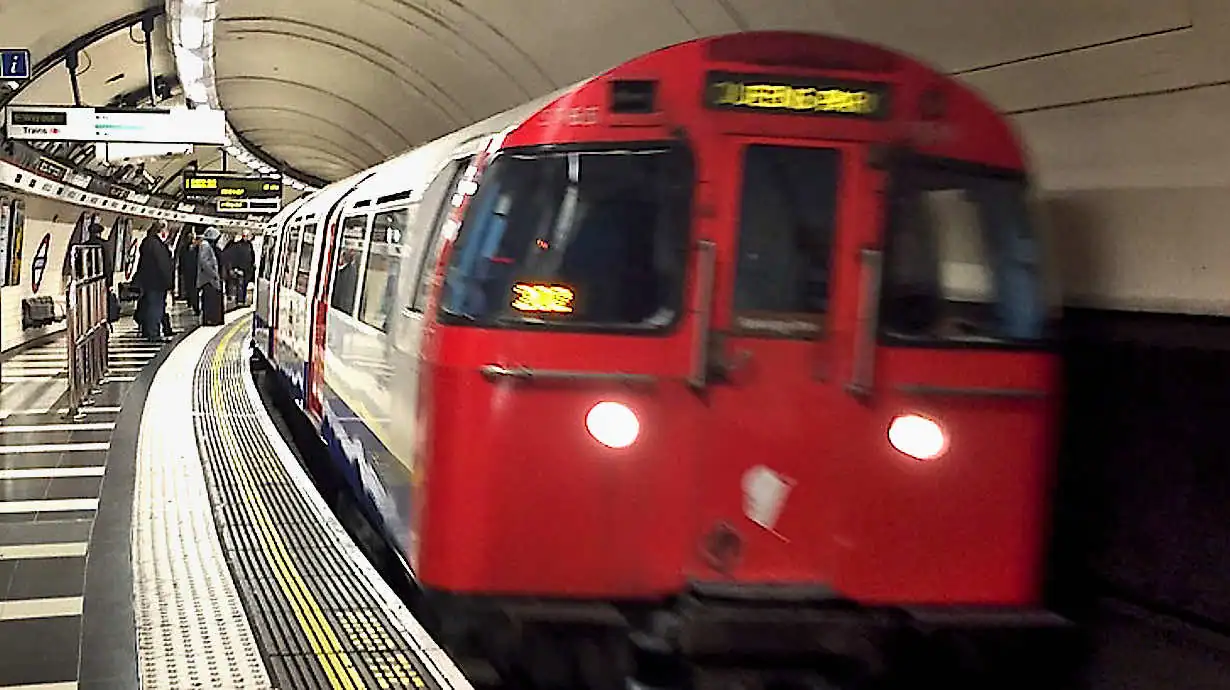
How much is a London train fare?
You can buy tickets using cash, your contactless card, or by getting hold of an Oyster card, Visitor Oyster card or travelcard.
Tube journey planner
Get information about a station:
Plan a route between two stations (remember to check for tube strikes and delays):
Where can you get a tube map?
Free maps can be picked up inside tube stations in the most central, touristy parts of London. The best online map is at the TFL website: tfl.gov.uk/standard-tube-map.pdf.
Where can you get London underground timetables?
Paper timetables – You can get paper timetables from one of the Visitor Centres at Heathrow airport, Euston station, King’s Cross, Liverpool Street, Paddington, Piccadilly Circus and Victoria.
Online timetables – You can also look them up on the TFL website at tfl.gov.uk/travel-information/ – or this very website, by selecting a station from the dropdown menu above.
Download the TFL app – The official TFL app is worth downloading onto your phone because it comes with a tube map and route planner. Check out their website for details: tfl.gov.uk/maps_/.
How often do London underground trains run?
How often London underground trains run will depend on which line you’re using and the time of day you’re travelling, but a good rule-of-thumb is every 5-10 minutes in zone 1, going up to every 2-5 minutes during rush hour. Trains outside zone 1 can be anything from 10-30 minutes.
Services typically operate between 5 AM and 00.30 AM (Mon-Sat) and 7 AM to 11.30 PM (Sun), but some of the busier lines operate 24 hours a day on the night tube.
You can view of a map of the night tube routes on the TFL website.
When is rush hour on the London underground?
Rush hour on the London Underground is slightly different to peak time, and runs roughly from 7.30 AM to 9.30 AM, and 5 PM to 7 PM – don’t expect to get a seat during rush hour!
Peak time is used to work out the fare, and applies from 6.30 AM to 9.30 AM, and 4.30 PM to 7 PM (Mon-Fri). Weekends and public holidays are always classed as off-peak.
When does the night tube operate?
Central line – Trains run roughly every 10 mins between White City and Leytonstone, every 20 mins between Ealing Broadway and White City, and every 20 mins between Leytonstone and Loughton/Hainault. There’s no night service between North Acton and West Ruislip, Loughton and Epping, or Woodford and Hainault
Jubilee line – Trains run roughly every 10 mins
Northern line – Trains run roughly every 8 mins between Morden and Camden Town, and every 15 mins between Camden Town and High Barnet/Edgware. There’s no night service on the Mill Hill East branch or Bank branch
Piccadilly line – Trains run roughly every 10 mins between Cockfosters and Heathrow T5. There’s no night service on the T4 loop, or between Acton Town and Uxbridge
Victoria line – Trains run roughly every 10 mins
How can you avoid lifts and escalators on the tube?
Avoiding tube stations with lifts and escalators is harder than you’d think because a lot of them are very old and don’t have lifts, or even escalators, so the odds are pretty high that you’ll find yourself facing a long flight of stairs at some point.
If you look on a tube map then the stations showing a blue wheelchair symbol have step-free access between the train and the street, so these ones should be accessible for practically everybody, but the ones with a white wheelchair symbol only have step-free access between the platform and the street, so you might need some help getting on and off the actual train.
The journey planner on the TFL website will let you search for a route with extra options like ‘Use escalators but not stairs’ – tfl.gov.uk/plan-a-journey/.
How do you get through the ticket barriers?
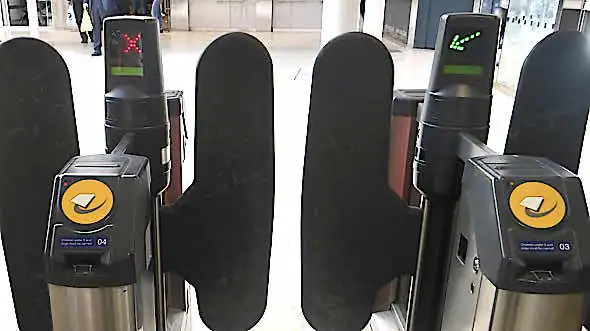
The first thing that you need to know is that you can’t get through every single barrier at the station. You can only use the ones that are showing a green arrow or yellow arrow next to the gate. If it has a red cross or yellow cross then it won’t accept your ticket.
The yellow circles in front of the gates are called Oyster readers. If you have an Oyster card or contactless card then all you have to do is wave it near the reader and the gate will open automatically. If you have a paper ticket, or a paper travelcard, then you have to insert it face-up into the slot beneath the Oyster reader. The same ticket will then pop out of the slot on the top. The gate will open automatically when you remove your ticket from this slot.
Note: If you’re carrying some bulky bags or you’ve got a pushchair with you, then you might struggle to fit through the barrier. So just look for the extra-wide barrier which is usually positioned at the far end for wheelchair users. This one is also useful if your child is travelling for free because they won’t have their own ticket.
How can you find the right platform?
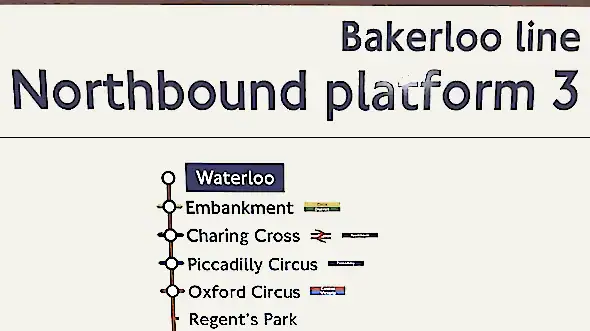
To find the right tube platform you need to know your direction of travel. If you want to travel from Piccadilly Circus to Oxford Circus on the Bakerloo line, for example, then you need to look for signs saying Bakerloo Northbound, because that’s the direction you travel on the ground. If you’re returning in the opposite direction then you’d need Bakerloo Southbound. Other journeys might say Eastbound or Westbound.
If an underground line branches in two different directions then you also need to look for the last stop on the line. So if you want to travel from Westminster to Kew Gardens on the District line, for example, then you need the District Westbound to Richmond – because Richmond is the last stop on the branch which goes to Kew Gardens. If you boarded the District Westbound to Wimbledon then that would be the wrong one, because that branch doesn’t go to Kew Gardens.
How can you avoid tunnels on the London underground?
If you’d rather avoid tube tunnels on the underground then you’re out of luck in central London because the journeys in zones 1 and 2 are practically all underground.
Once you get out to zone 3 and beyond then it’s the total opposite, because most of them are above ground.
Check out this handy map on the TFL website which shows you which parts are above ground: tfl.gov.uk/tube-map-with-tunnels.
Can you take a bike on the London underground?
Non-folding bikes are banned on large parts of the London underground because the tube trains are so busy. Check out this handy map on the TFL website showing you which stations allow them: tfl.gov.uk/cycles-on-public-transport-map.
The Northern line is a bit more confusing because not only does it split in two, but each branch also has the same final stop. So what you have to do then is look for the words Bank loop and Charing Cross loop. If you look on a tube map then you’ll see that one branch goes past Bank station, whilst the other goes past Charing Cross.
And bear in mind that the Circle line doesn’t actually go around in a circle, like its name implies (welcome to London!). If you ride it round as far as Edgware Road then you’d actually have to get off and board another train to Baker Street.
What is a National Rail train?
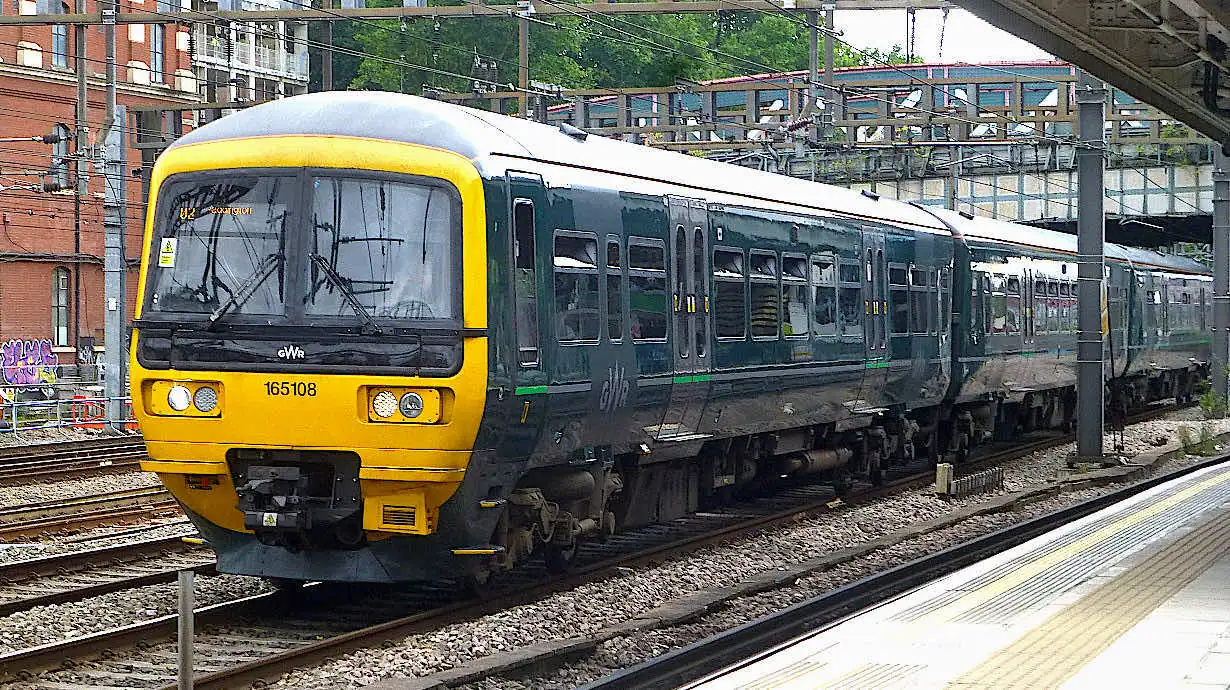
A National Rail train is an overground train that goes outside London to other parts of the country.
There are lots of different companies that operate National Rail trains: Chiltern Railways, East Midlands, First Great Western, Great Northern, Merseyrail, South West Trains and Thameslink, to name just a few, but they all come under the umbrella of ‘National Rail’.
Each company will have their own individual website, but we recommend using the official National Rail website at nationalrail.co.uk, because it allows you to search all of the different companies together.
Where can you catch a National Rail train?
Here’s a list of the main National Rail stations in central London, with some of their most popular destinations.
Trains heading north – City Thameslink for Luton Airport, St. Albans – Euston for Birmingham, Glasgow, Liverpool, Manchester, Watford – King’s Cross for Cambridge, Edinburgh, Newcastle, Nottingham, York – Marylebone for Birmingham – Moorgate for Hertford – St. Pancras for Luton Airport, Nottingham
Trains heading south – Blackfriars for Ashford International, Brighton – Cannon Street for Ashford International, Margate – Charing Cross for Canterbury, Dover, Hastings – Farringdon for Brighton – London Bridge for Brighton, Canterbury, Hastings – St. Pancras for Brighton, Eastbourne, Eurostar to Paris – Victoria for Brighton, Dover, Eastbourne, Gatwick Airport, Margate – Waterloo for Bournemouth, Canterbury, Dover, Hastings, Portsmouth, Southampton
Trains heading west – Paddington for Bath, Cornwall, Heathrow Airport, Oxford, Plymouth, Wales – Waterloo for Cornwall, Salisbury
Trains heading east – Fenchurch Street for Southend – Liverpool Street for Stansted Airport
Good manners and bad etiquette on the train
If you’re new to the London Underground then here’s a quick little guide to tube etiquette:
Getting through the barrier – Tube stations are very busy places and you should always try and have your ticket ready before you reach the barrier. If you stand there for a few minutes rifling through your pockets and bag then expect to get some withered looks.
Standing on the escalator – The biggest sin that a tourist can commit on the tube is blocking up the escalator by standing on the left. If you want to stand still then use the righthand side. The lefthand side is for people who want to save some time by hurrying up it.
Not quite as annoying (but pretty close!) is when people get to the end of the escalator and then just stand there, totally oblivious that a whole bunch of people are about to crash into the back of them.
Standing on the platform – Underground platforms are usually quite long but lots of people just stand by the entrance corridor, not bothering to move down. If the station is busy then you should always try and move along to make more space.
Getting on the train – It’s good manners (and good sense) to let passengers off the train before you try and board it. You should also try and move down inside the carriage once you’re onboard.
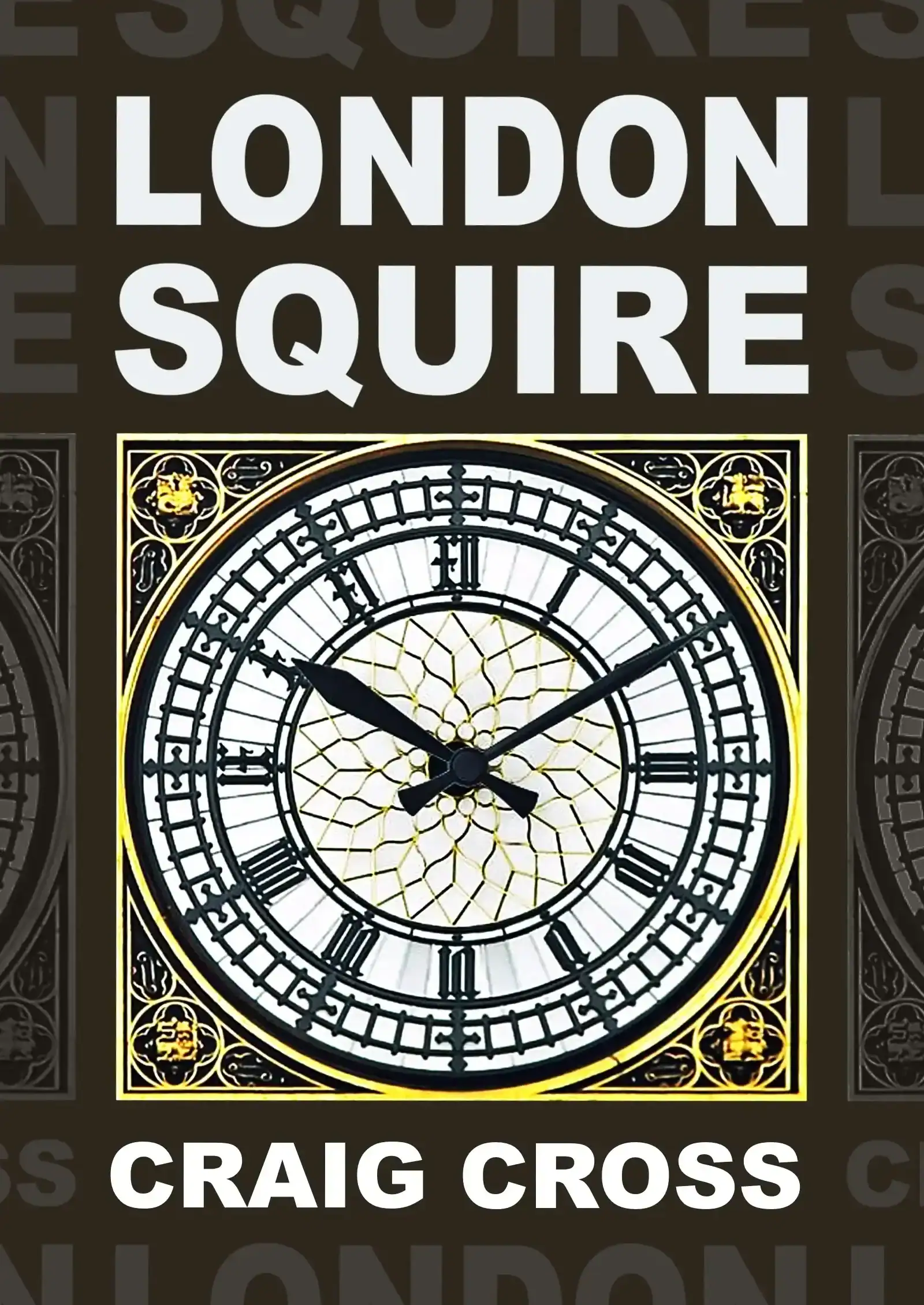 London Squire guidebook – Check out my guidebook available to buy at Amazon, Apple and Kobo. I’ve spent the last twenty years visiting London’s landmarks, attractions and hotels and collected all of my reviews, example itineraries, advice about using the buses and trains, and handy practical info into an eBook, along with 650 original photographs
London Squire guidebook – Check out my guidebook available to buy at Amazon, Apple and Kobo. I’ve spent the last twenty years visiting London’s landmarks, attractions and hotels and collected all of my reviews, example itineraries, advice about using the buses and trains, and handy practical info into an eBook, along with 650 original photographs


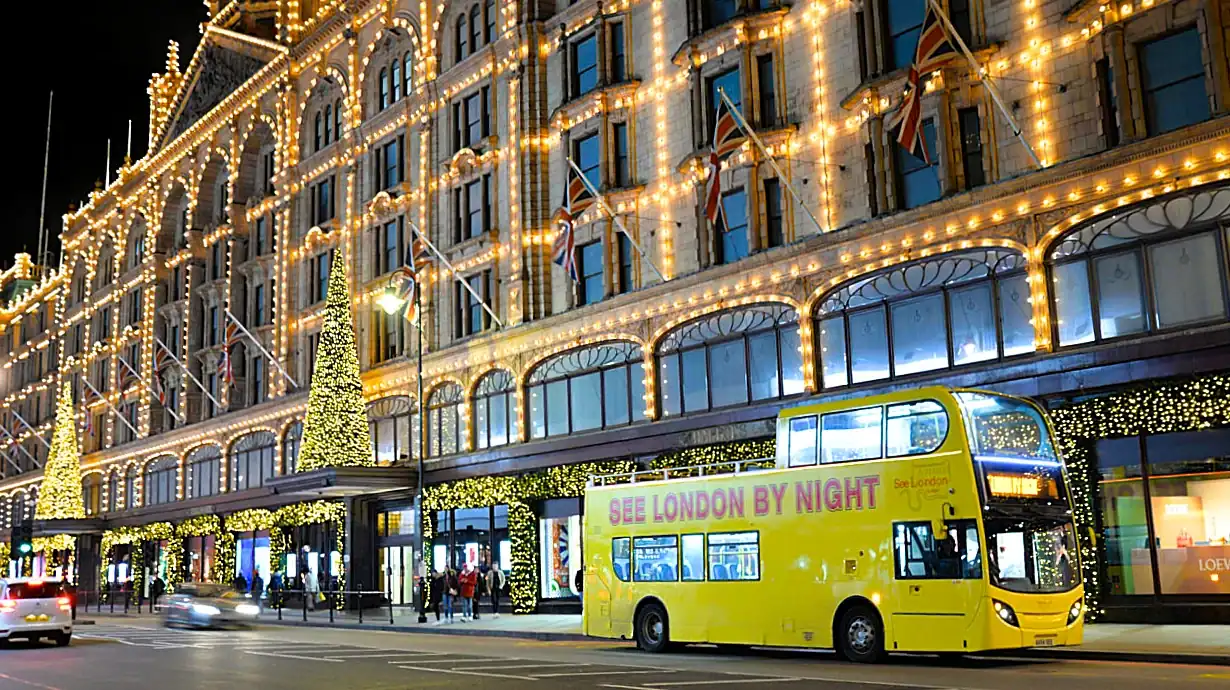
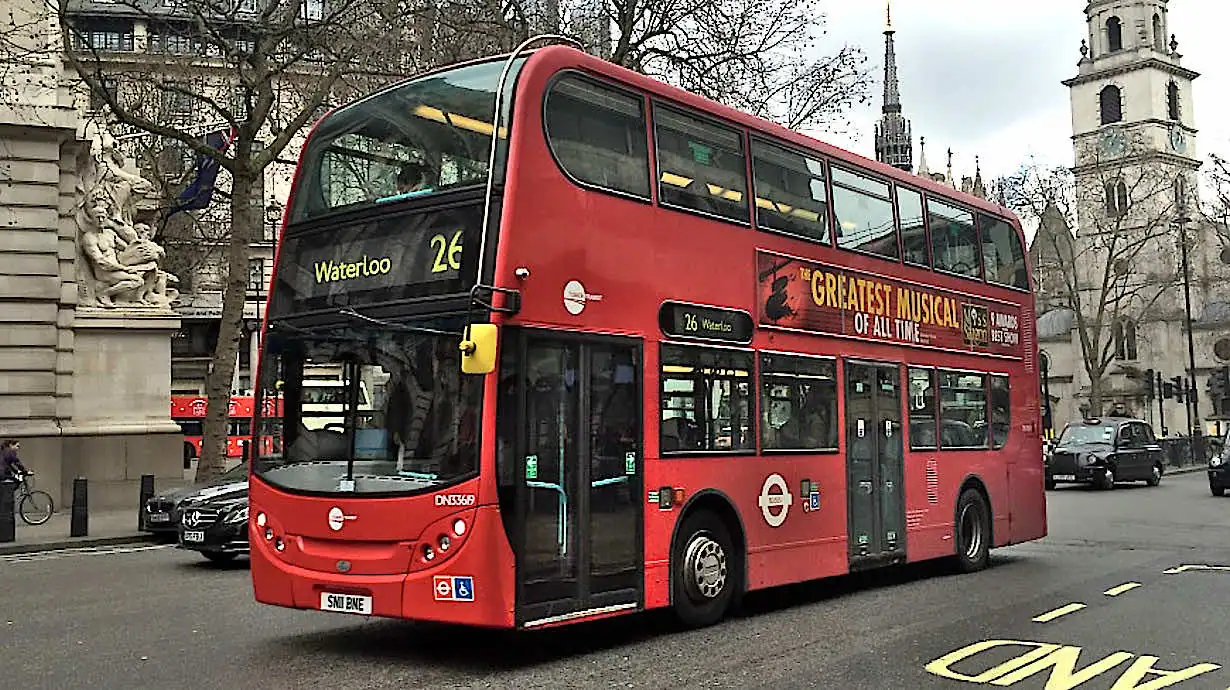
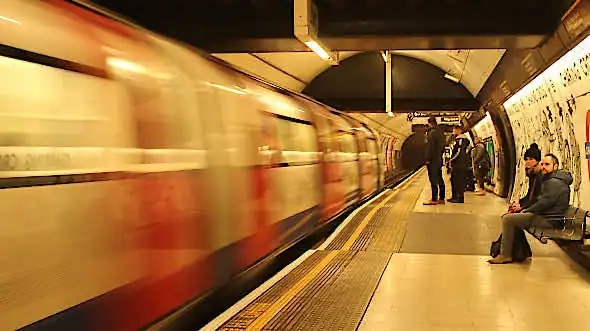


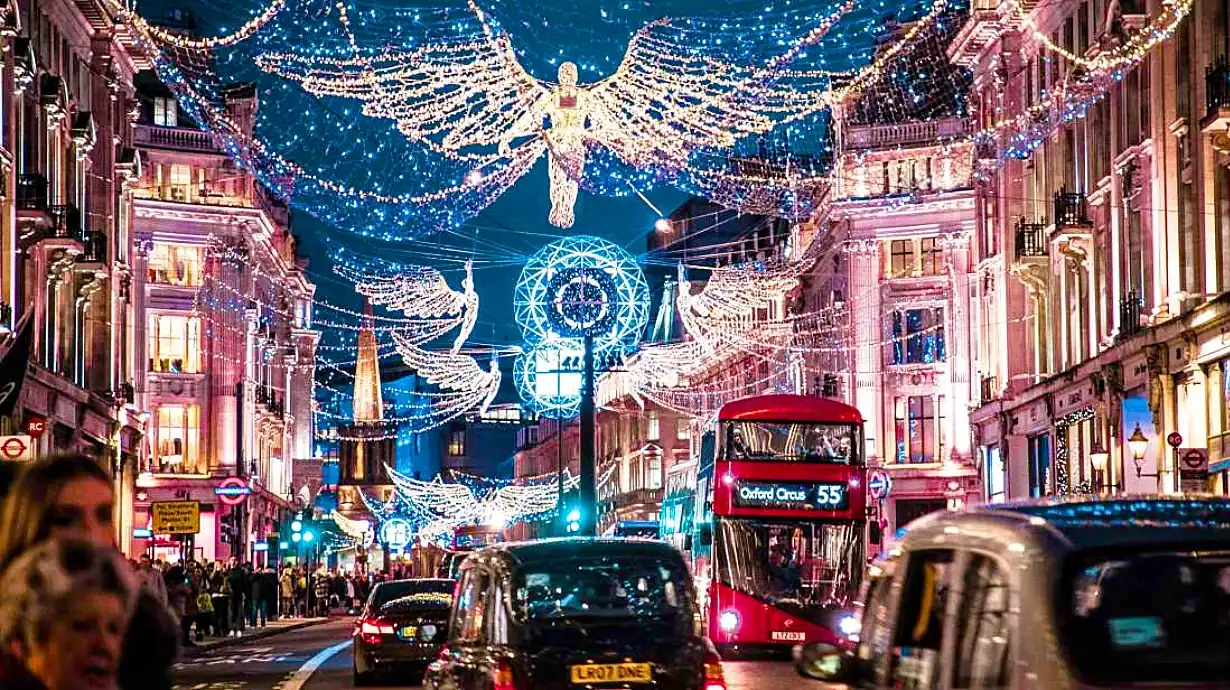
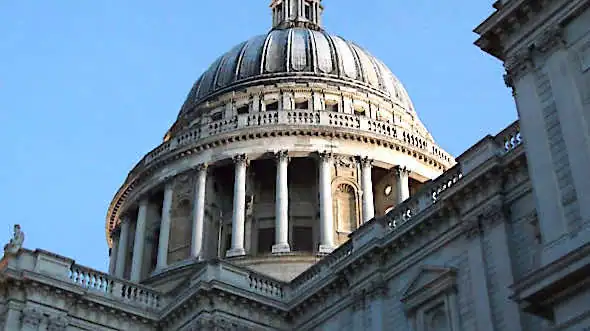
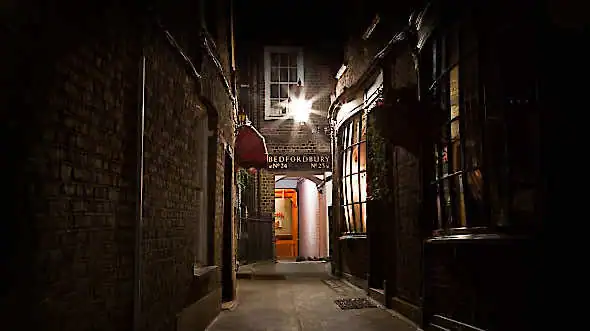
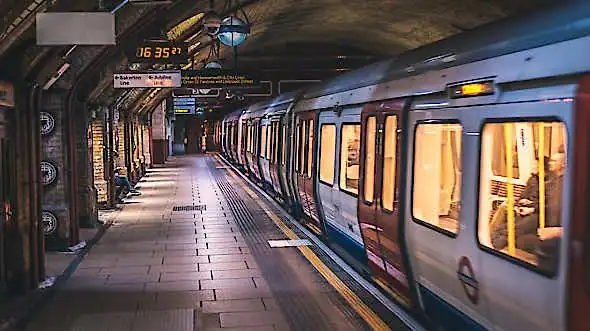
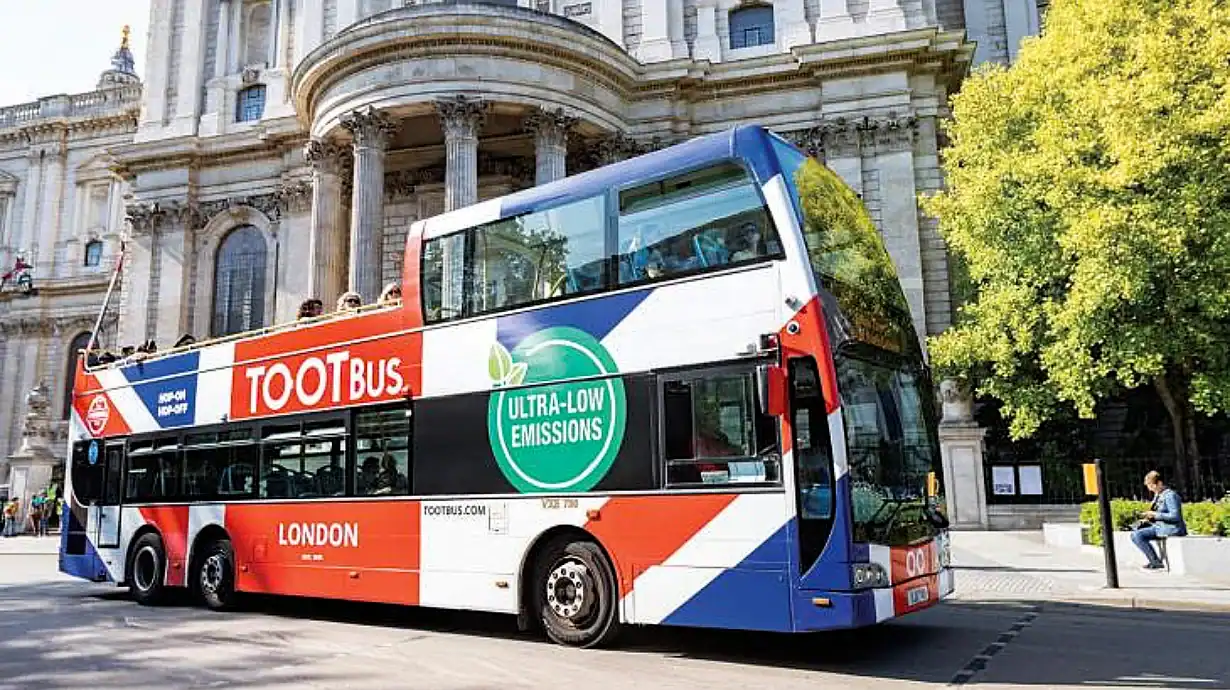
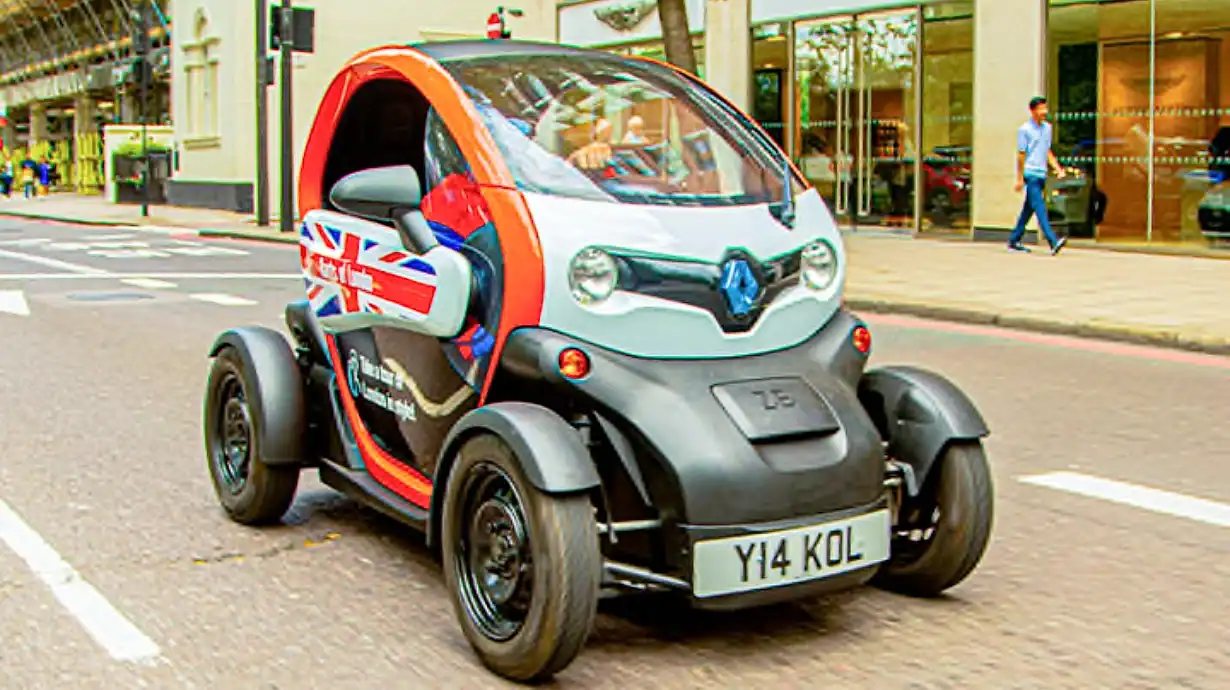
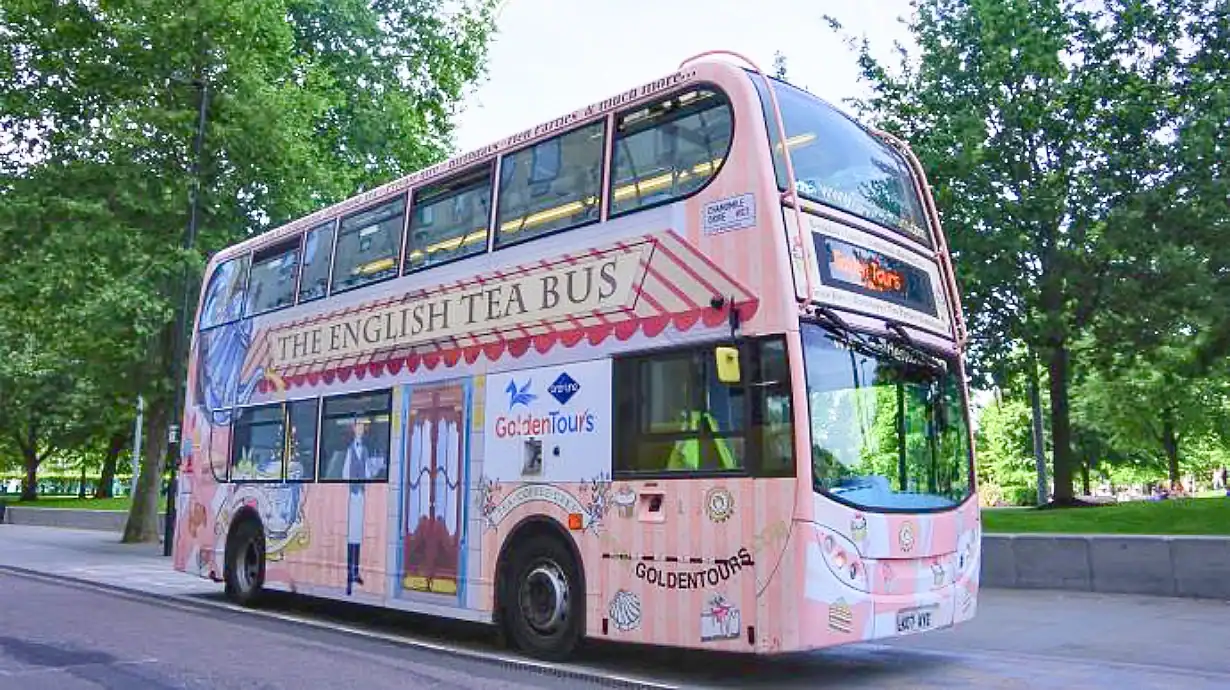

Your comments (78)
Ask a question about using the trains
Jean I’m traveling with my 15 month old daughter how easy is it to access the underground as I have a buggy.
Staff Hi. They always have extra wide gates for wheelchairs and buggies at the entrance, so you can get through there okay, but a lot of underground stations still have stairs. If you enter your route into the journey planner dropdowns above it will tell you about the lifts, escalators and stairs at each station.
John Hardman Transport for London is so good, people in London don’t realise how lucky they are to have such a great transport system and with reasonable fares. True I am talking about being retired and travelling off peak. Recently stayed 5 days in Crystal Palace. Travelled into London each day by train and fully utilised the tube system. I almost enjoyed that as much as looking around London.
Margaret49 Good morning, We are using the tube for the first time for an overnight stay, as we are not local we will need to use the self service ticket machine for Zone 1-4, do the machines take cash or credit cards? So we know what is appropriate for our journey which will involve a peak time inward and off peak return.
Staff Some machines accept cash and cards but other ones will be labelled ‘cards only’, so you have to look at the top to see what it accepts. All the peak and off-peak prices for zones 1-4 are listed on our train fares page – londondrum.com/transport/adult-train-fares.php
Sammy Hi, what are peak times as underground cheaper tickets are off peak, but what times are peak so we know when you avoid them?
Staff Hi Sammy. For Oyster and contactless peak time is 6.30 AM to 9.30 AM and 4 PM to 7 PM (Monday to Friday). For travelcards peak time is before 9.30 AM (Monday to Friday). Weekends are always off-peak.
Tom What are ‘off-peak’ times on the London Underground on a weekday please?
Staff Hi Tom. For Oyster and contactless cards off-peak is outside the hours of 6.30 AM to 9.30 AM and 4 PM to 7 PM (Mon-Fri). For travelcards off-peak is any time after 9.30 AM (Mon-Fri). Fares are based on what time your journey starts. So if your journey starts during off-peak hours, it will be charged as off-peak. It doesn’t matter what time your journey ends.
David MB Two retired people from US in London (no senior discounts for non-Londoners, boo!), travelling on probable multiple trips between Zones 1 and 2 back and forth from Aldgate East. We understand fares are one way and with the limit on Oyster cards being less than double the one way fare, what is the cheapest way for us to use the underground? We will buy tickets to and from airports separately.
Staff Hi David MB. Oyster will likely be the cheapest (a weekly travelcard can also work out cheaper depending on how many days you’re staying and how many journeys you’re making). The maximum you will pay each day is the daily cap for the zones you travel through, Any money left on your card which you don’t spend you can get refunded at the end. If you’re flying into Heathrow then you can even use it for that as well (but only for travelling on the tube, not the Heathrow Express).
Jagroy Is there any charge for a pushchair on the tube.
Staff Hi Jagroy. There’s no charge for pushchairs or luggage, but bear in mind that a lot of underground stations are quite old and you might have to descend a flight of stairs.
Gary Tamplin Generally speaking, what is the cheapest way of getting around London for a day on the tube, if you are travelling between most of the zones, a day Oyster card or contactless?
Staff Hi Gary. Oyster and contactless are the cheapest (they’re both the same price), but you have to pay an extra £5 deposit the first time you buy an Oyster card, so maybe contactless will be cheaper for you if you haven’t already got one.
Adriana How do I get from Ealing Broadway to Hammersmith by train.
Staff Hi Adriana. You can just get the district line – londondrum.com/transport/train-journey.php?from=ealing-broadway&to=hammersmith
Anthony Pike What platform do I use for the jubilee line from Waterloo to Baker Street.
Staff Hi Anthony. The jubilee westbound at Waterloo is platform 5 – londondrum.com/transport/trains.php?station=waterloo
John Barmby I am travelling from Tower Hill to Stratford on the District line and Central As these trains use the same platform at Mile End, do I need to tap out at Mile End before boarding the Central line to Stratford.
Staff Hi John. No, you don’t have to tap out when changing trains. You don’t have to pass through any barriers when changing trains/platforms. If you did go through the barriers at Mile End then that would be the end of your journey.
John miller I’m travelling from King’s Cross train station to white hart lane, what tube station do I get off at?
Staff Hi John. Get the Victoria line to Seven Sisters, then the London Overground to White Hart Lane. It’s about a five minute walk from there.
Liz Is Euston station tube to Clapham Common direct.
Staff Hi Liz. It is direct, yes – londondrum.com/transport/train-journey.php?from=euston&to=clapham-common
David Hi – How do get the easiest way with large suitcases from Liverpool Street station to Southwark tube station. Thanks in advance!
Staff Hi David. I would forget the tube and just get the 344 bus which goes between the two. Because you’d have to change trains twice if you want to go by tube. The bus only takes 16 mins.
David Thanks – is it ok to take large suitcases on the bus number 344? – Can we pay with Oyster-cards? Thanks!?
Staff It’s fine to take big suitcases. You can just stand with them in the wheelchair space if it’s not being used. Its okay to use Oyster cards as well.
David Thanks very much for your help! This was important to know!?
David Hi – One more question. We arrive by National Express coach to Liverpool Street station bus stop. – Where abouts in the area is the nearest bus stop for number 344 going to Southwark. Thanks once again!?
Staff It goes from Stop B down the side of the station. I think the National Express drops you off at either Stop E or G on the other side.
David Thanks again for great service!?
Bruce Hello – is there easy access when changing from Central line to Jubilee line at Bond Street. How far must one walk? Is a lift available? All relevant info is welcome. Thanks.
Staff Hi Bruce. It’s step-free but you have to take two different lifts down to the jubilee platforms and walk about 110 metres.
Bruce Thanks – that helps to know.
Mark Rookie question (I’ve never used Contactless on the Tube before, I’ve always used paper Travelcards as I’m from outside London). Anyway, in terms of using Contactless, if I want to go from Paddington to Mile End am I correct in thinking I tap in at Paddington Elizabeth Line, tap out at Whitechapel Elizabeth Line, tap in again at Whitechapel District Line, tap out Mile End District Line, and the system will calculate this as an Adult Single between Paddington and Mile End?
Staff Hi Mark. You only tap down at the beginning and end of your journey. You shouldn’t have to go through any barriers when changing trains in the middle. If you do that then you’ll end up paying for two separate journeys, because the computer will think that you have exited the station at Whitechapel.
Sonia Hi, If I travel with 2 suitcases (a 20 inch and a 28 inch), from Victoria to Gatwick airport, which one will be cheaper – the National Express coach or the Gatwick express (as I read from the website that they will charge 8 GBP for 1 extra suitcase)?
Staff Hi Sonia. It looks like it’s the Gatwick Express by about 6 quid, but that’s without knowing when you’re going, or how far in advance you’re buying your ticket.
Anton John Hi, What would be the most cost effective way to get from Bromley-by-Bow station to Gatwick Airport? Thanks.
Staff Hi Anton. I would get the underground to Victoria and pay by contactless (or buy a single ticket from the machine if you haven’t got a UK bank card), and then buy a Gatwick Express ticket online in advance.
Faye McPherson I want to travel to London Heathrow Terminal 3 from Russell Street Station on 22nd February as I will be coming from Edinburgh on the sleeper to Euston where do I buy a ticket to get to Heathrow.
Staff Hi Faye. The easiest thing would be to just use your contactless bank card, and tap it down on the gate – londondrum.com/transport/contactless-cards.php (assuming you’ve got a UK bank card) – but if it’s just a one-off journey then you can also buy a ticket from the self-service ticket machine in the station. You just tap the screen and choose your destination.
Faye McPherson Thank you and I take it the tube takes me to Terminal 3 at Heathrow.
Staff It does yes, there are three stations at Heathrow and one of them is for Terminals 2&3 – londondrum.com/transport/train-journey.php?from=russell-square&to=heathrow-terminals-1-2-3
Chris For our upcoming visit to London, we are staying in a flat near Sherpherd’s Bush. It looks like the easiest (fewest changes) route from Heathrow would be the Elizabeth Line to Ealing Broadway and then the central line to Shepherd’s Bush. Would this be feasible with 4 people and their luggage?
Staff Hi Chris. You’ll have a flight of 20 stairs and an escalator at Shepherd’s Bush, but that’s about it. If you don’t mind the extra money then you could get the Heathrow Express to Paddington and a £25-£30 taxi to Shepherd’s Bush (you can fit five in a taxi, so four plus luggage will probably be okay, but it depends how much luggage you’ve got).
Cp On the underground should my 15 year old just use a contacless card to pay or is there a better method?
Staff Hi CP. He can do, if he’s got his own card. You can’t share one card between two people.
shirley How oftern to the trains go from Heron Quays to waterloo.
Staff Hi Shirley. They go every 2-5 minutes.
Evelyn Barry Hi I have my Irish staff privilege card and 4 box coupon tickets. Can I use either of these on Heathrow express and London tubes. Thanks.
Staff Hi Evelyn. We’d like to help but we’ve never heard of either of those things. If it’s a TFL staff card then I would try contacting them.
Mike Copp As an electric wheelchair user (wheelchair not scooter) I will arrive at Waterloo Train station and have booked assistance off the train, will someone be available to assist me on to the underground to Euston station? where I have booked assistance onto a train to Birmingham? I am used to how assistance works with overground trains but not the underground. I believe my ticket is valid not only for overground but also between mainline stations using the underground.? Any information, tel no appreciated.
Staff Hi Mike. You can only prebook assistance on the London Overground and Elizabeth line. On all other tube lines they do something called ‘turn up and go’, which basically means you have to go up to a member of TFL staff at the station and they will arrange for someone to come and help you to the platform and help you board the train. There is a help desk at waterloo. After you come off the national rail train look for the big central clock hanging off the ceiling and its next to that. More information about ‘turn up and go’ here – tfl.gov.uk/transport-accessibility/help-from-staff. We cant tell if your ticket includes the underground as well without seeing what you’ve bought, but assuming it does then you’ll probably receive a separate ticket for it.
Jane What’s the best line to use to travel from Paddington station to Greenwich?
Staff Hi Jane. Assuming you just want to go to Greenwich, the place, rather than the actual station, I would get the Elizabeth line to Canary Wharf and then the DLR to Cutty Sark.
Vijay kumar I am travelling first time to London.Which u/g line I should follow from T4 to Queensway u/g stn.I do not have travel cards.
Staff Hi Vijay. I would probably get the Elizabeth line to Paddington and then walk 15 mins to Queensway. Otherwise you”ll have to get off at Bond Street instead and change onto the Central line for Queensway.
Jane Hi my grandson and I are going to Wimbeldon tennis this year and haven’t a clue on the underground tubes.we are travelling from Northampton train station to Euston station.can you please let me know what tubes we use, if we change tubes and what stops to get off and platforms.
Staff Hi Jane. It’s quicker to go to Southfields station (15 min walk to the tennis) rather than Wimbledon itself (20 min walk). So from Euston you can get the Victoria line to Victoria (southbound platform), then change to the District line to Southfields. But make sure you get a District line train that says it’s heading towards Wimbledon. If it says it’s heading towards Richmond or Ealing Broadway then it will be the wrong one. It will say where it’s heading on the LCD board on the platform.
Elizabeth wills Which platform at farringdon station do I need to get to kings cross please?
Staff Hi Elizabeth. It’s westbound, platform 2 – londondrum.com/transport/trains.php?station=farringdon
Paul G Going underground from Clapham Common to Westminster Abbey and Buckingham Palace using contactless card. Do we get off at St. James’s Park or is there a closer station and do we need to pay twice for changing from northern line to district line. Thank you.
Staff Hi Paul. St. James’s is the closest to Buckingham Palace. Westminster is the closest to Westminster Abbey. Personally, if it was me, I would just stay on the Northern line and walk it from Charing Cross because it’s not very far. You can walk past Trafalgar Square down Whitehall, have a look at Horse Guards and Downing Street, then do Westminster Abbey, and walk through St.. James’s Park alongside the lake to Buckingham Palace. You don’t have to pay twice for changing trains. You’d only pay twice if you actually exited through a ticket barrier and left the station.
Joe Hi. Visiting London next week for first time and need to get from King’s Cross to Covent Garden Seven Dials. What tube line and can it by accessed directly from Kings Cross? Thanks.
Staff Hi Joe. You can get the Piccadilly line straight to Covent Garden – londondrum.com/transport/train-journey.php?from=kings-cross-st-pancras&to=covent-garden
Mary I’m travelling from London City Airport to Westminster early December and as I’m a novice it feels a bit stressful. Can you please advise me of the best way to travel and is it straightforward? Thank you.
Staff Hi Mary. I would get the DLR to Canning Town (DLR = Docklands Light Railway, which is really no different to using the London Underground, it’s just above ground), and then change trains onto the Jubilee line for Westminster. You can use a lift plus escalator to change trains at Canning Town – londondrum.com/transport/train-journey.php?from=london-city-airport&to=westminster —- westminster is a fun stop to arrive into London at, because when you come out you will have Big Ben literally right in front of you.
Mandy How to get from St. pancas to king henrys rd.
Staff Hi Mandy. Assuming you mean the one by Primrose Hill, you could get the northern line to Chalk Farm and then walk it from there. It’s about a 10-15 min walk.
Greeshma We are a group of 5 adults visiting London for 6 days. We are staying at a place in Wembley. Which card do you suggest as we will have to travel daily to and fro from Wembley to the main tourist spots in London which if I am right are mostly in Zone 1.
Staff Hi Greeshma. It depends how many journeys you make each day, and which zones those journeys are in. It’s possible that a zone 1-4 weekly travelcard might work out cheaper, but if you’re making 3 or more journeys on five of the days then you might be better off with an oyster card instead, because then you’ll be paying the ‘daily cap’ each day. There’s not a lot in it though, because you also have to add a deposit on top when you buy a new oyster card, so if it was me I would probably just go for the easy option and get a weekly travelcard. (Where are you staying? I’ve stayed in the Ibis near Wembley Stadium).
Maria Hi, what London airport has a direct train or tube to Southwark? First time visiting London!!
Staff Hi Maria. None of them go direct. But you can catch a train from Gatwick to London Bridge, which is very close.
Mark Need to get the underground from Kings Cross to London Liverpool Street….where do I go once I get off the train….thanks.
Staff The entrance to the underground is just outside the station. If you come out the main exit at the front then it’s towards your right – londondrum.com/transport/train-journey.php?from=kings-cross-st-pancras&to=liverpool-street
Leave a comment (no need to register)